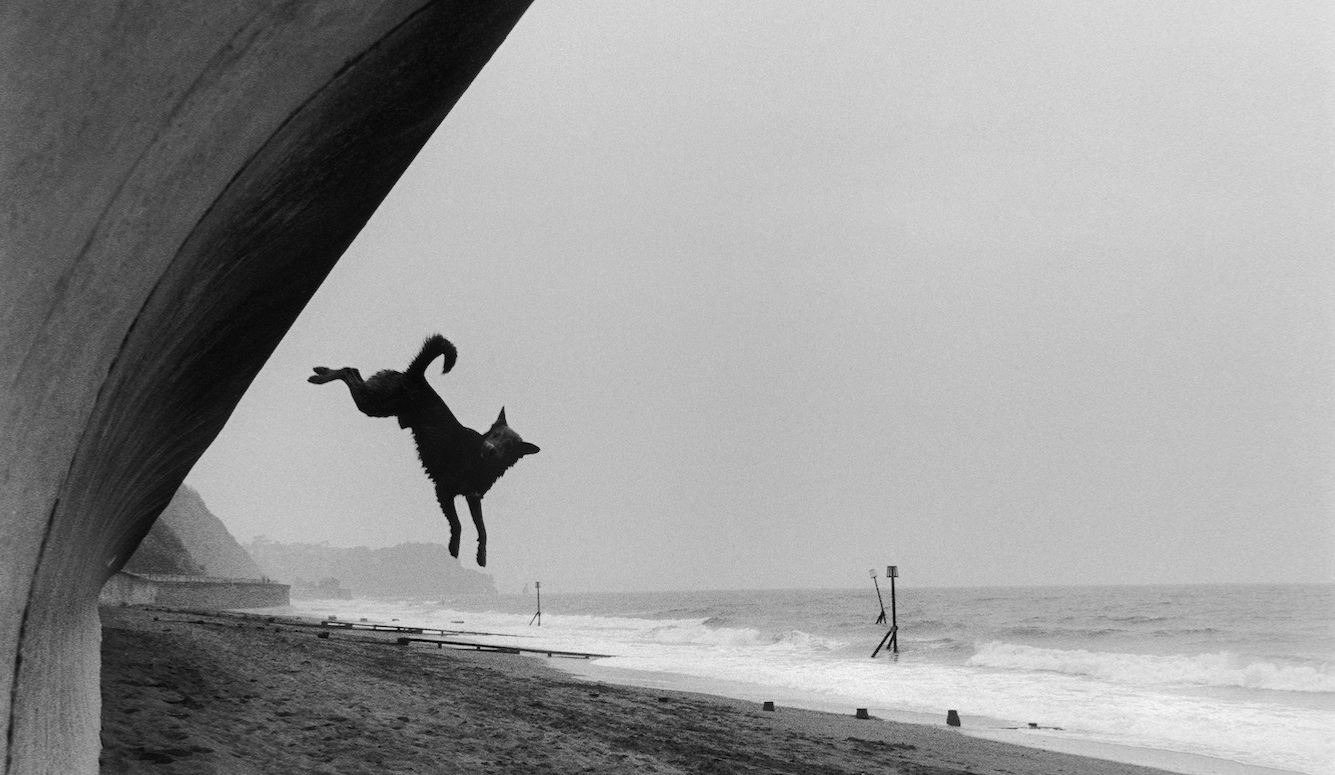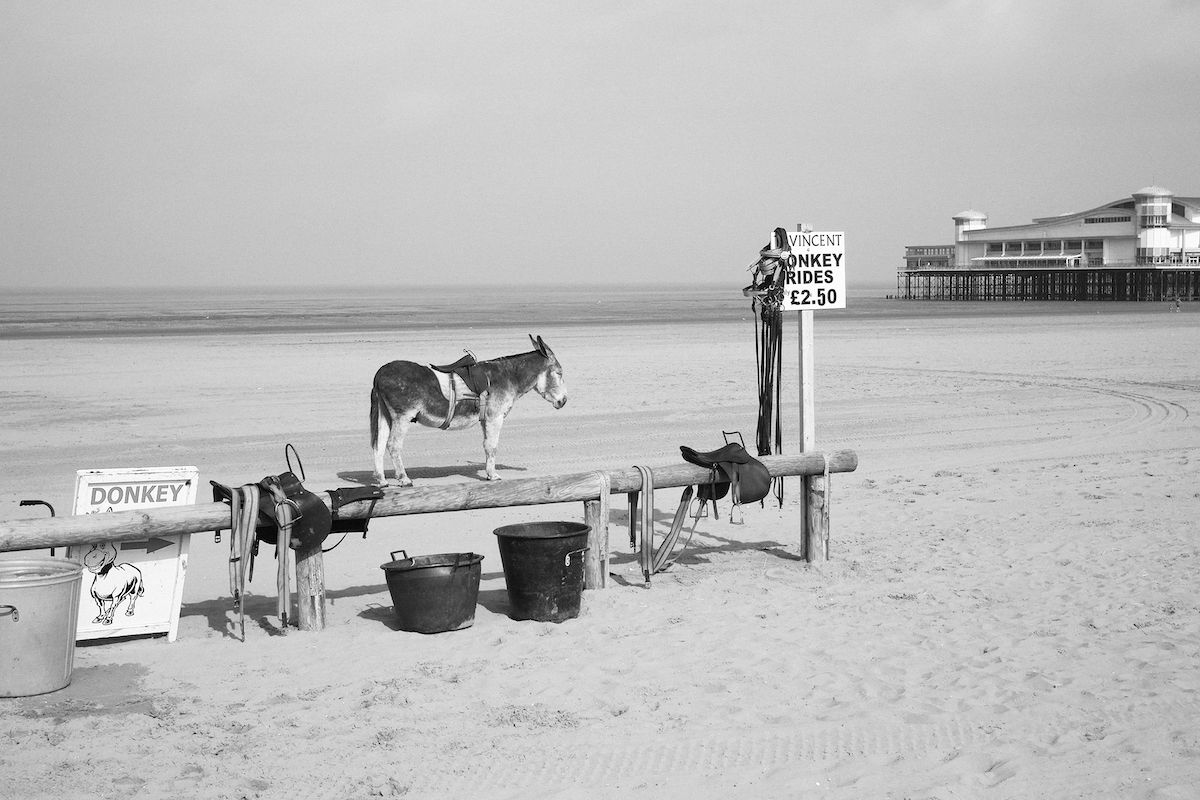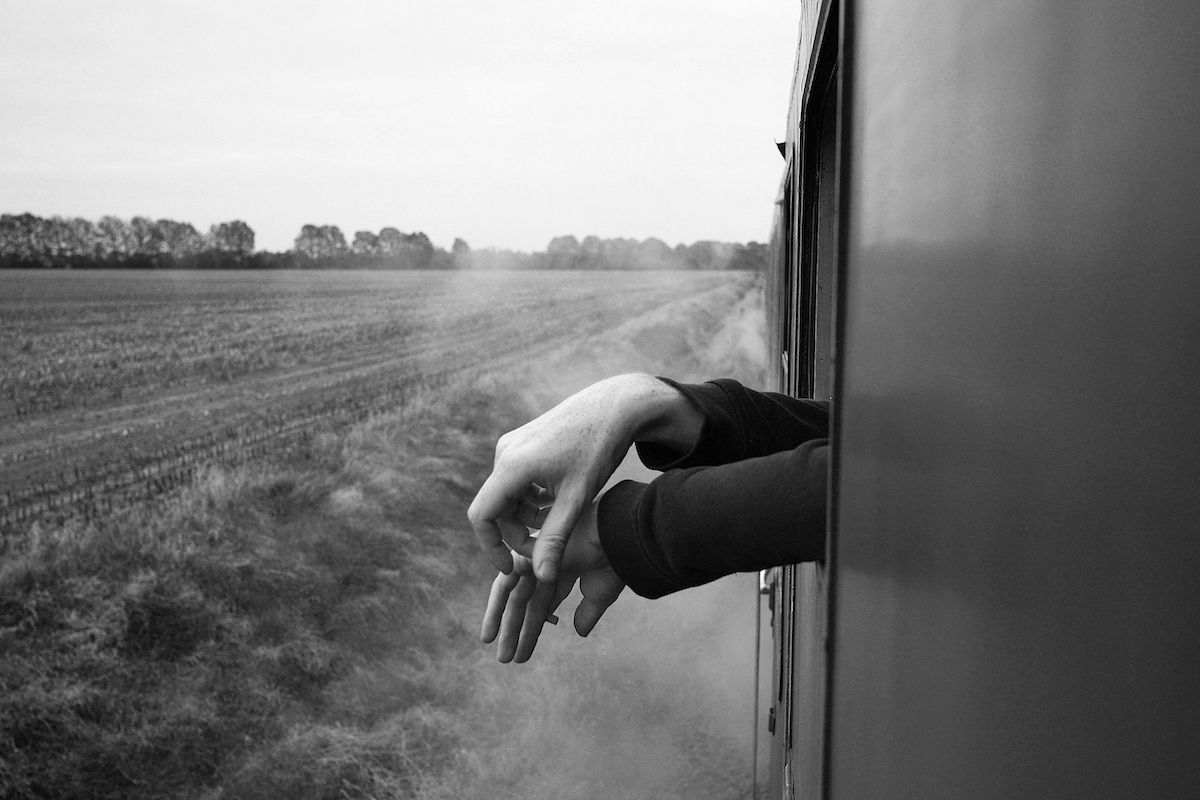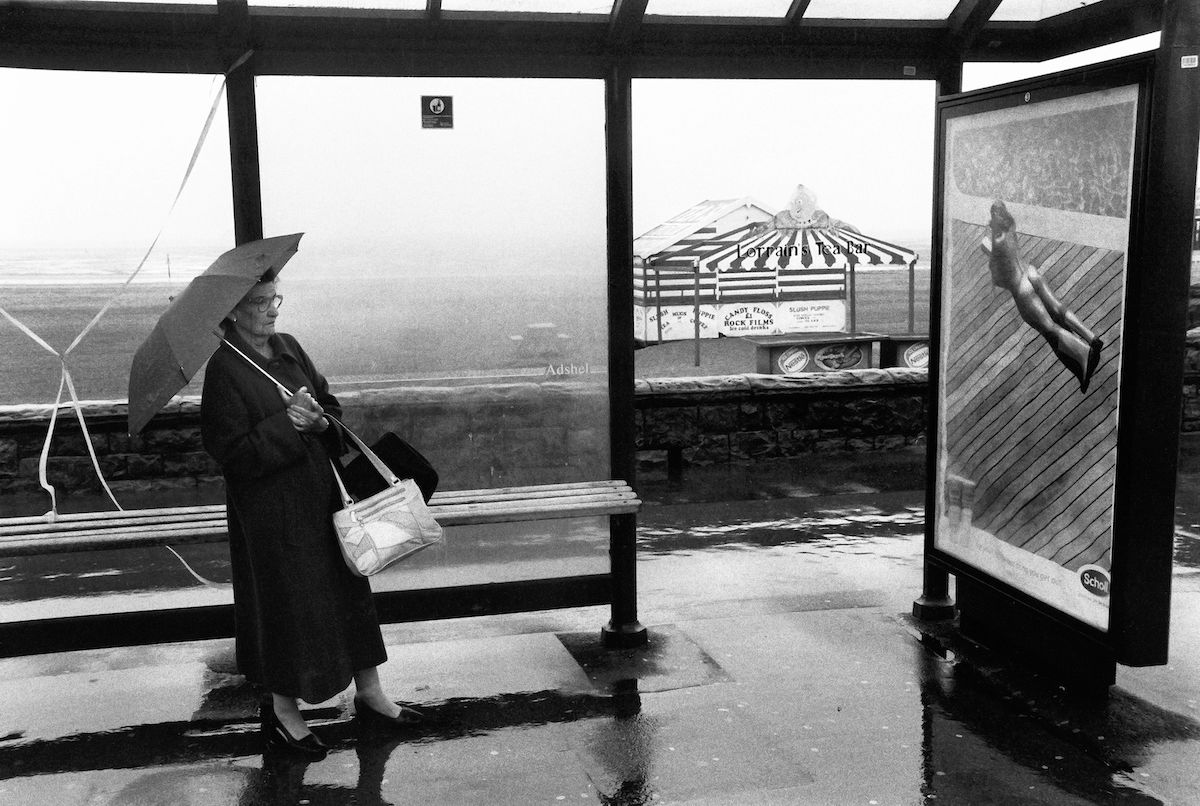Art and Culture
Sir Roger Deakins—An Englishman in LA
A new exhibition in LA offers a rare chance to enjoy still photography by one of the world’s most talented cinematographers.

The sleek Leica gallery in Los Angeles is currently hosting a quintessentially English exhibition—39 arresting stills captured by Sir Roger Deakins, one of the most esteemed cinematographers of our time. Spanning five decades, the monochrome photographs are taken from Deakins’s 2021 book Byways—a title inspired by the time he spent as a young man during the early ’70s “wandering the byways” of north Devon in the southwest of England.
The boy from Torquay would go on to win Oscars, BAFTAS, and numerous other film-industry accolades for his work on some of the most beautifully crafted and iconic films in modern cinema. He was responsible for shooting the crumbling totalitarian dystopia in Michael Radford’s adaptation of 1984; the sordid portrait of London’s underbelly in Alex Cox’s biopic Sid and Nancy; the mesmerising underwater scenes in Skyfall; the majestic scenery of The Assassination of Jesse James by the Coward Robert Ford; Will’s epic run through the raging battlefield in 1917; the triumph of liberation in The Shawshank Redemption. He has also enjoyed fruitful long-term collaborations with the Coen brothers (for whom he has shot 11 films to date) and Denis Villeneuve (with whom he has worked three times).
“On leaving Bath Academy of Art,” writes Deakins in his book, “I was offered a job as a photographer at the Beaford Arts Centre in North Devon. My brief was simply to reflect the life of the area with a view to holding exhibitions in local shop windows or village halls.” The results are charming—a Deakinsian portrait of provincial England. Endearing shots include local farmers and their animals; a livestock market; a local flower show; a stag hunt; scenes from local beaches and county fairs. Hints of the distinctive style Deakins would develop are already evident—the simple form, the gentle irony, and an air of intrigue in even the most mundane of settings. The heavy grain in some of the early photos—the fairground shots, in particular—suggests that the young photographer was experimenting with pushing the stock to get as much detail out of the negative as possible.

Several conflicting ideas may be juxtaposed within a single frame. The 1971 photograph titled “Boys’ Night Out,” for instance, shows a group of small boys gazing at the bright lights of the carousel at Barnstable Fair. But this portrait of innocence is complicated by the signs in the background advertising “stripteaze” [sic] and boxing. In “The Ghost Train,” taken the same year, three excited boys are emerging from the ride’s tunnel. But in the foreground, we can see the blurred, foreboding image of a policeman or guard, and the ghoulish characters on either side of the tunnel add an element of the grotesque. A year later, Deakins photographed “Recruiting Booth,” which appears to show three people outside a tent. A closer look, however, reveals that two of the figures are not real—the one on the left is a dummy of a policeman, while the figure on the right is a poster of a policewoman. Only the man climbing over a rope between the two is real.
“I have often thought about these images from fifty years ago,” writes Deakins in Byways. He confesses to a “love affair with the South West of England,” and writes that these feelings are “reflected in the subsequent series of images, many of which come from more recent periods of ‘down time’ between film projects.” Some of the exhibition’s strongest images were captured at the end of a film shoot or while travelling from or to the film set. “The shot of Salisbury Plain in the dusk was taken at the end of a day of scouting locations for 1917,” writes Deakins, “and the lone tree features in the final frames of that film.”
A photograph titled “Smoking Break” shows the disembodied hands of a person leaning out of the train window. It was taken on board a period train en route to Berlin, at the end of a day spent filming for Stephen Daldry’s The Reader. “A Break in the Shooting of Skyfall” was shot at Glen Etive, in the highlands of Scotland, during a short break for lunch—a spontaneous shot sparked by the sight of Dame Judi Dench’s chair resting next to James Bond’s iconic Aston Martin.

The stunning image “Lightning Strikes” was shot while location-scouting. Deakins spotted the isolated bar and wanted to capture it in the middle of a thunder storm. With that image in mind he went back several times and waited. One thundery day, when filming wrapped early due to bad weather conditions, Deakins drove 30 miles in the rain and waited until an enormous thunderclap sounded. The result is majestic—the lightning reaches out of the heavens and touches the roof of the bar like the finger of god. “This is one of the most commented-on images in the show, [and it] also happens to be a personal favourite,” says the show’s curator Paris Chong. “It is simply perfect in every way, a true decisive moment.”
That image hangs next to “The Wind-Blown Tree”—a shot of an odd-looking tree that Deakins first spotted years ago, when he was running and walking in Dartmouth. As in the case of “Lightning Strikes,” he had a particular idea of how he wanted the shot to look. He waited for winter when the tree would be bare and photographed it with the camera towards the sun to create a dramatic silhouette.
Deakins believes that a still photo implies a story—a moment in time that raises questions about what came before and after the picture was taken. A picture he shot in Melbourne titled “This Could Be the Last Man On Earth” is one such image. Strangely serene, it features a lone figure swimming away from the waterfront, a ferry to Tasmania visible in the distance and a white plastic bag on the pier in the foreground. In a poignant shot titled “View from Appledore Quay,” we see the back of an elderly man on the beach, resting on two walking sticks as he gazes at the open sea.
Deakins points out that photography allows us to capture a moment in reality that will never be repeated, and looking at his shots, I found myself wondering about the circumstances that led these individuals to the particular place in time when they were taken. The 2004 photograph “Looking For Summer,” shot at Weston-super-Mare on a very rainy day, shows a sombre, older woman standing under a bus-stop shelter and recoiling slightly from a poster of a naked young woman sunbathing. “The Joy of Flight” was taken on the Teignmouth beach and shows a playful dog in midair as it jumps off a promenade to catch a stick thrown by its owner. When Deakins spotted the owner and his dog, he moved closer in anticipation. The final shot has the black dog looking at the camera, a concrete wall on one side of it and the wide open sea on the other.

“Each of us see[s] differently,” writes Deakins in his book. “We are drawn to subjects that resonate with us personally and our interpretations differ through our choice of camera angle and composition. Without a detailed explanation of how and why a picture came about, can it mean the same to the viewer as it does to the photographer?” By way of illustration, Deakins points to the image “The Eagle Standing Over German War Graves in Sighisoara, Romania.” “Knowing that the image of the eagle was taken in Romania and is of a statue that stands sentinel over a German war grave can only change the relationship between the photograph and the viewer,” Deakins writes.
Photography, he maintains, is personal—he remembers where he was and what he thought of when he took every one. He takes very few shots, sometimes walking for hours without once pressing the shutter. So, every photograph is carefully considered—it tells a story, asks questions, and provides us with some insight into its subject. But it also reveals the artistry in the eye of its beholder.
“Byways” is showing at the Leica Gallery in Los Angeles until January 8th. All stills are reproduced courtesy of Damiani Books.





